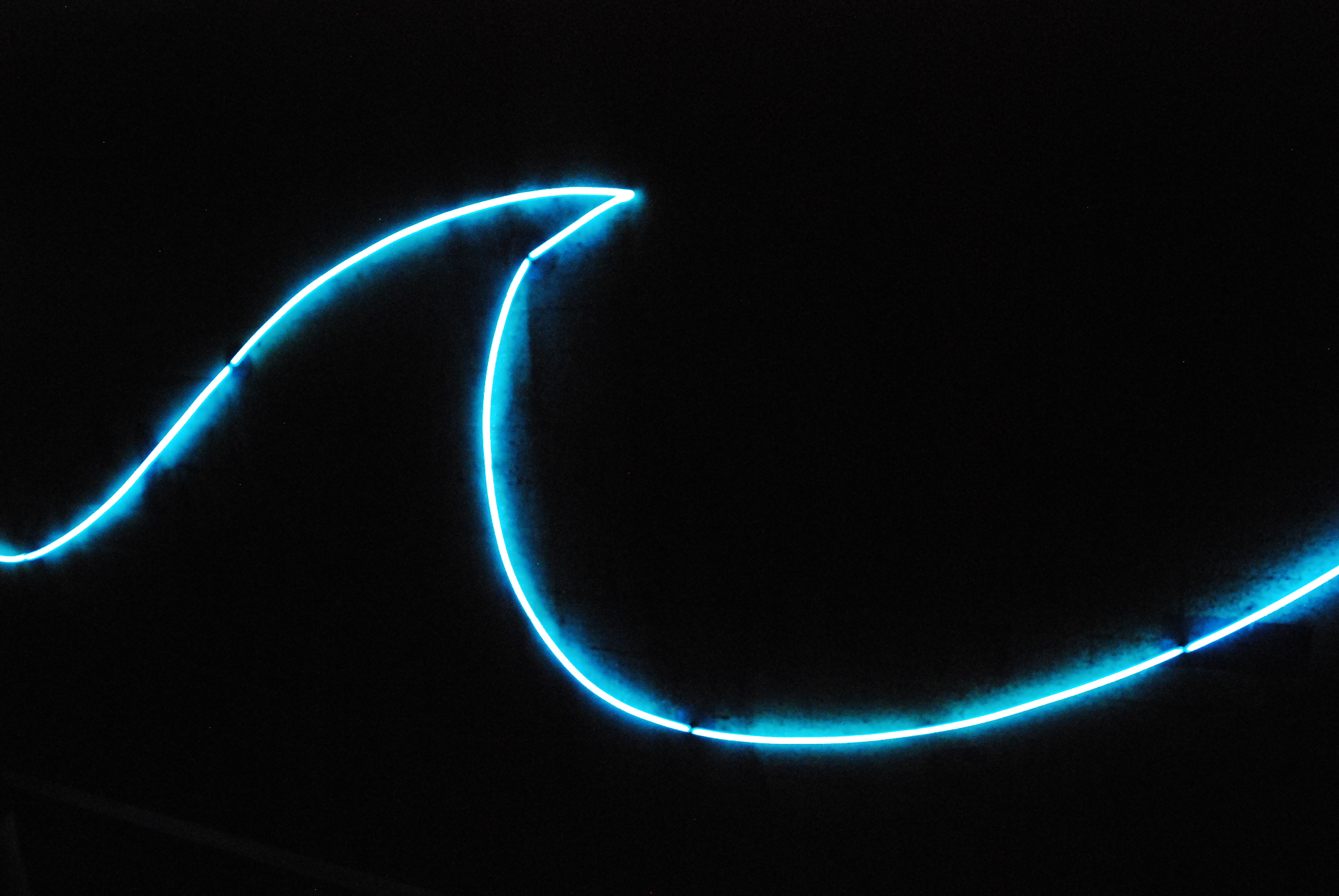Fiction by Mark Crimmins
—
Black hair frames her blue face like a rounded doorway and all her features are black. The angled Inca arches of her eyebrows. The dots of her eyes. The two vertical strokes delineating her nose. The horizontal bar of her mouth. Her blue hands tremble as if they have just crawled out of her sleeves. The black pattern on her orange kimono is an intricate maze. She stands on a mountaintop. The sky behind her is brown. He paints her in a fury. He puts some black into the green of the mountain, some lighter brown into the chocolate sky. It is a summer morning. Outside his window the city is making glad sounds. The worlds of inside and outside are in perfect equilibrium. He paints for hours. He does not know why. He simply continues to modify the woman and the landscape that contains her. He knows nothing about her. She is just this person he is painting, strangely contained on the plane of the canvas. But as she emerges the woman seems to ask him who she is and the easel itself seems ill at ease. He gives her a narrow crescent of neck. Though he has painted it no differently and has no perspectival skill, the neck seems a few inches farther away than the face, the head has come a little closer, and now a third plane is evident: the hands, blue fingers nervously interwoven, seem even closer than the face. He checks to see if he has put more paint on the hands, a bit less on the face, still less on the neck. But he has not. All three planes are equally flat. So how can he have stumbled upon the illusion of depth? He does not know. It is simply there. When she is finished, he no longer feels alone in the room. He even starts to feel uncomfortable. After the paint has dried, to ease the discomfort, he turns the painting around so that the back of the canvas is facing the open room, but he soon finds himself slipping behind the easel and peering at the woman now jailed behind its pine bars. This makes him uncomfortable again so he turns her back around. He tries to ignore the painting but he can’t. He sits on the sofa reading, but while turning pages he looks up at the woman and she seems to be watching him. If he stares at her kimono, the labyrinthine tangle of its pattern seems to move. He begins to think painting the picture might have been a mistake. But then again, he has done something today that he has never done—taken up a brush, dipped it in paint, and applied it to a canvas. A friend gave him the easel, the painting materials, and the canvas for safekeeping when he moved to New York. They remained under the sofa for three years. All his life he has been a doodler. The only people he has ever drawn are a child’s stick figures. Now he has painted this woman. He finds himself staring at her for long periods of time. Putting music on is unthinkable, even though he always listens to music. They are alone in the silence of the room, he and this creature of his making. But that is precisely the conundrum—because they are both in the room neither he nor the woman is alone.
—
Mark Crimmins has published experimental fictions in Happy, Confrontation, and theNewerYork. He taught 20th Century Fiction at the University of Toronto from 1999 to 2013. He recently moved to Hong Kong to write stories and publish his first collection.
—
Featured Image photograph by E.B. Bartels, www.ebbartels.com.




